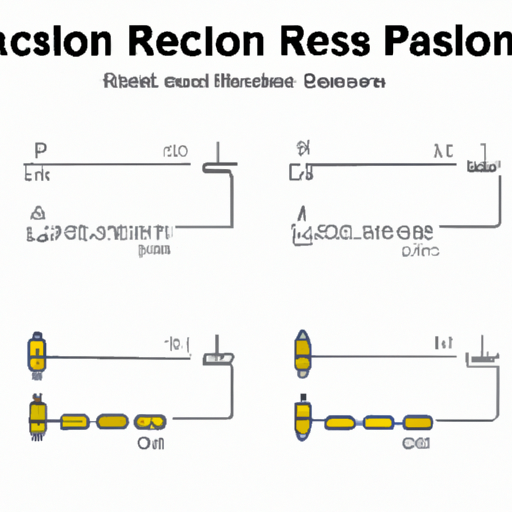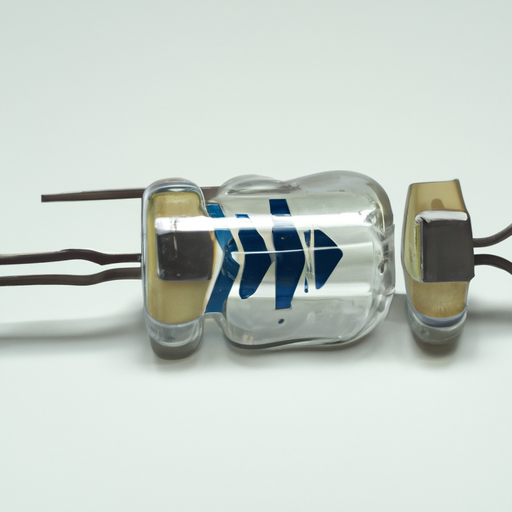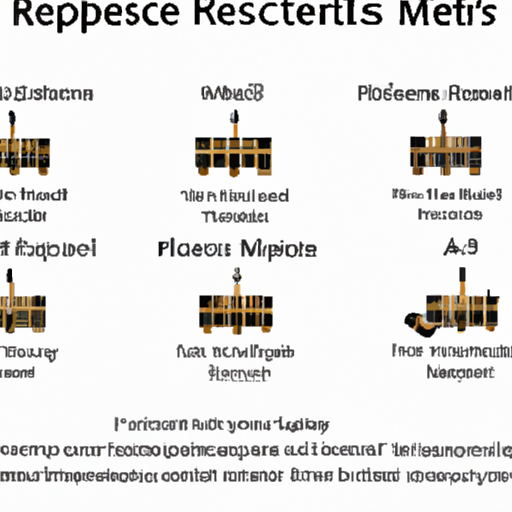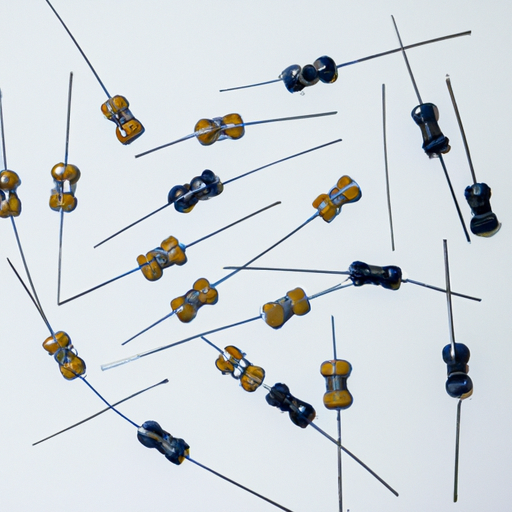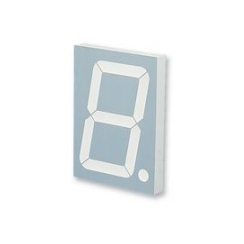What are the common production processes of resistor 3?
Common Production Processes of Resistor 3
I. Introduction
Resistors are fundamental components in electronic circuits, serving the critical function of controlling current flow. Among the various types of resistors, Resistor 3 stands out due to its unique characteristics and applications. This blog post will delve into the common production processes of Resistor 3, exploring the materials, manufacturing techniques, and future trends in the industry.
II. Types of Resistors
A. Overview of Resistor Types
Resistors come in various forms, each designed for specific applications. The primary categories include:
1. **Fixed Resistors**: These resistors have a constant resistance value and are widely used in circuits where precise resistance is required.
2. **Variable Resistors**: Also known as potentiometers, these allow for adjustable resistance, making them ideal for applications like volume controls in audio equipment.
3. **Specialty Resistors**: This category includes precision resistors, high-power resistors, and others designed for specific functions.
B. Focus on Resistor 3
Resistor 3 is a type of fixed resistor known for its stability and reliability in various electronic applications. It is often used in precision circuits where consistent performance is crucial. Compared to other resistor types, Resistor 3 typically offers better temperature stability and lower noise, making it a preferred choice in high-performance electronics.
III. Raw Materials Used in Resistor Production
A. Conductive Materials
The performance of Resistor 3 largely depends on the materials used in its construction. The primary conductive materials include:
1. **Carbon**: Commonly used in carbon composition resistors, carbon provides a stable resistance value and is cost-effective.
2. **Metal Films**: Metal film resistors utilize thin layers of metal to achieve precise resistance values, offering excellent stability and low noise.
3. **Wire-Wound Materials**: These resistors are made by winding a metal wire around a core, providing high power handling capabilities.
B. Insulating Materials
In addition to conductive materials, insulating materials are crucial for ensuring the resistor's performance and longevity. Common insulating materials include:
1. **Ceramic**: Known for its high thermal stability, ceramic is often used in high-power resistors.
2. **Epoxy**: This material provides excellent moisture resistance and is commonly used in the encapsulation of resistors.
3. **Other Composites**: Various composite materials are used to enhance the performance and durability of resistors.
C. Importance of Material Selection in Performance
The selection of raw materials directly impacts the performance characteristics of Resistor 3. Factors such as temperature coefficient, noise level, and power rating are influenced by the materials chosen, making it essential for manufacturers to carefully consider their options.
IV. Common Production Processes
A. Design and Engineering
The production of Resistor 3 begins with a thorough design and engineering phase. This involves:
1. **Specifications and Requirements**: Engineers define the desired resistance value, tolerance, and environmental conditions the resistor must withstand.
2. **Prototyping and Testing**: Initial prototypes are created and tested to ensure they meet the specified requirements before moving into full-scale production.
B. Material Preparation
Once the design is finalized, the next step is material preparation, which includes:
1. **Sourcing and Quality Control**: Manufacturers source high-quality raw materials and conduct rigorous quality control checks to ensure consistency.
2. **Pre-processing of Materials**: This may involve cutting, grinding, or treating materials to prepare them for the manufacturing process.
C. Manufacturing Techniques
The manufacturing of Resistor 3 involves several techniques, depending on the type of resistor being produced:
1. **Carbon Composition Resistors**:
- **Mixing and Molding**: Carbon powder is mixed with a binder and molded into the desired shape.
- **Curing and Finishing**: The molded resistors are cured to harden the material and then finished to achieve the required dimensions.
2. **Metal Film Resistors**:
- **Thin Film Deposition**: A thin layer of metal is deposited onto a ceramic substrate using techniques like sputtering or evaporation.
- **Laser Trimming**: Precision laser trimming is used to achieve the exact resistance value by removing material from the metal film.
3. **Wire-Wound Resistors**:
- **Winding Process**: A metal wire is wound around a ceramic or plastic core to create the resistor.
- **Encapsulation**: The wound resistor is encapsulated in a protective material to enhance durability and performance.
D. Quality Control and Testing
Quality control is a critical aspect of resistor production. Manufacturers conduct various tests, including:
1. **Electrical Testing**: Resistors are tested for their resistance values, tolerance, and temperature coefficients to ensure they meet specifications.
2. **Environmental Testing**: Resistors undergo tests to assess their performance under different environmental conditions, such as humidity and temperature variations.
3. **Reliability Assessments**: Long-term reliability tests are conducted to ensure that the resistors will perform consistently over time.
V. Assembly and Packaging
A. Final Assembly Processes
After manufacturing, the resistors undergo final assembly processes, which may include attaching leads or terminals and ensuring proper labeling.
B. Packaging Materials and Methods
Packaging is crucial for protecting resistors during transportation and storage. Common packaging materials include anti-static bags, blister packs, and cardboard boxes. Manufacturers often use moisture-resistant packaging to prevent damage from environmental factors.
C. Importance of Packaging in Product Longevity
Proper packaging not only protects resistors from physical damage but also helps maintain their performance characteristics. Moisture and dust can significantly affect resistor performance, making effective packaging essential for product longevity.
VI. Environmental Considerations
A. Sustainable Practices in Resistor Production
As environmental concerns grow, manufacturers are increasingly adopting sustainable practices in resistor production. This includes using eco-friendly materials and reducing energy consumption during manufacturing.
B. Waste Management and Recycling
Effective waste management strategies are implemented to minimize the environmental impact of resistor production. Many manufacturers are exploring recycling options for raw materials and packaging to reduce waste.
C. Compliance with Environmental Regulations
Manufacturers must comply with various environmental regulations, such as RoHS (Restriction of Hazardous Substances) and WEEE (Waste Electrical and Electronic Equipment), to ensure their products are safe for the environment.
VII. Future Trends in Resistor Production
A. Technological Advancements
The resistor manufacturing industry is witnessing significant technological advancements, including automation and the use of artificial intelligence in quality control processes. These innovations are expected to enhance production efficiency and reduce costs.
B. Innovations in Materials
Research into new materials is ongoing, with a focus on developing resistors that offer improved performance and sustainability. For example, the use of nanomaterials may lead to resistors with enhanced properties.
C. Market Demands and Shifts
As electronic devices become more compact and efficient, the demand for smaller and more reliable resistors is increasing. Manufacturers are adapting to these market shifts by developing miniaturized resistor designs that maintain performance without compromising quality.
VIII. Conclusion
In conclusion, the production processes of Resistor 3 are complex and multifaceted, involving careful material selection, advanced manufacturing techniques, and rigorous quality control. As technology continues to evolve, the importance of resistors in modern electronics remains steadfast. The future of resistor manufacturing looks promising, with ongoing innovations and a growing emphasis on sustainability.
IX. References
1. Academic journals on electronic components and materials science.
2. Industry reports on resistor manufacturing trends and technologies.
3. Manufacturer guidelines and specifications for resistor production processes.
This comprehensive overview of the common production processes of Resistor 3 highlights the intricate steps involved in creating these essential components, emphasizing their significance in the ever-evolving landscape of electronics.

